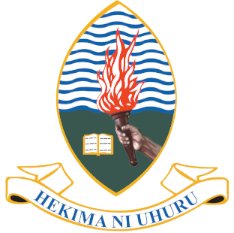| Title: | Dr |
|---|---|
| Name: | Grace Malley |
| College/School/Division: | Institute of Resource Assessment |
| Section: | |
| Role: | Lecturer |
| Current Summarised CV: | Holding a Ph.D. in Geography and Environmental Studies from Pennsylvania State University, I am a broadly trained environmental geographer with (i) a background in environmental studies; (ii) a focus on human-wildlife interactions and other socio-ecological systems, environmental conservation, and sustainability; and (iii) extensive experience in geospatial technologies and spatial analysis, and their application in research and development (R&D) projects. In my R&D endeavors, I use geospatial technologies (GIS and remote sensing) as well as statistical methods to analyze differentiated outcomes of human-environment interactions. I have conducted several R&D projects on the complex human-environment interactions in agriculture-dependent communities, particularly in East Africa where local people’s livelihoods directly depend on the natural resources available in their environment. Within my Ph.D. dissertation research project, I examined human-environment interactions under changing landscapes around protected areas in Morogoro region, Tanzania. Specifically, I focus on the human-elephant interactions to explore the dynamics in coupled human and natural systems, and their trajectories in shared landscapes. My research involves a comprehensive assessment of persistent changes in land uses and land covers (LULC), and an analysis of spatial-temporal patterns of climatic change in the area – using earth observation and model data. By identifying possible factors driving LULC change and analyzing its past trend, I model a possible future trajectory to determine where the changes may occur in the future. Through modeling, potential future impacts of LULC change are assessed and hence future scenarios developed to support decision making in land use planning. In relation to changes in the landscape composition and using social-ecological systems and human-wildlife interaction frameworks, I examined how human-elephant relationship is changing over time and shifting along the conflict -coexistence continuum. I evaluated the level of tolerance and attitudes of the local communities towards elephants and implications for elephant conservation. My dissertation demonstrates how human-elephant conflict is not a static condition but is produced under specific conditions and at particular times and spaces through variable and uneven interactions between people and elephants. Finally, using Least Cost and Circuit-based theory, I evaluated the status of wildlife migratory corridor connectivity between protected areas for elephants’ movements in this region, and assess how it relates to occurrences of human-elephant conflicts. With continued degradation of elephant habitats, and challenges presented by climate change, the need for elephants to move between different habitats is amplified. The results showed increasing degradation of elephant habitats and constrained movements in parts of the corridors that are almost blocked and hence potential for increased crop damage by elephants in the future as they try to move between the protected areas. I mapped LULC on Google Earth Engine and did LULC projection on TerrSet’s Land Change Modeler. The results showed that in the next decade conversion of natural vegetation to cropland will likely continue, aggravating human-elephant interactions. The ultimate goal of this project is to find ways to simultaneously enhance environmental conservation, conservation of elephants and improve local livelihoods. I identified areas that need special attention and efforts to maintain and restore connectivity for elephant movements and hence reduce human-elephant conflicts. Membership American Association of Geographers (AAG) National Environmental Management Council (NEMC)
Important Contribution Patents, major awards, prizes, projects and other recognition
|
| Professional Details: | View Professional Details |

